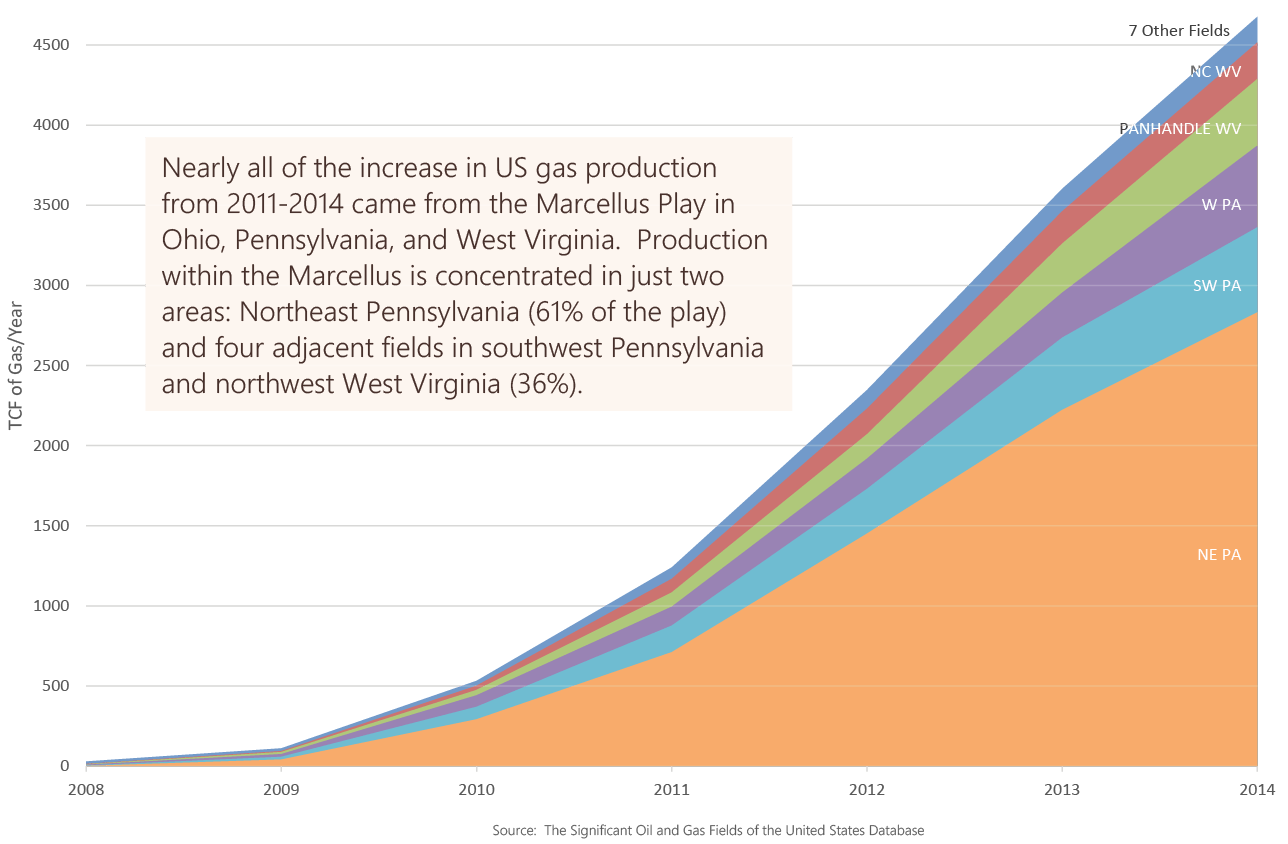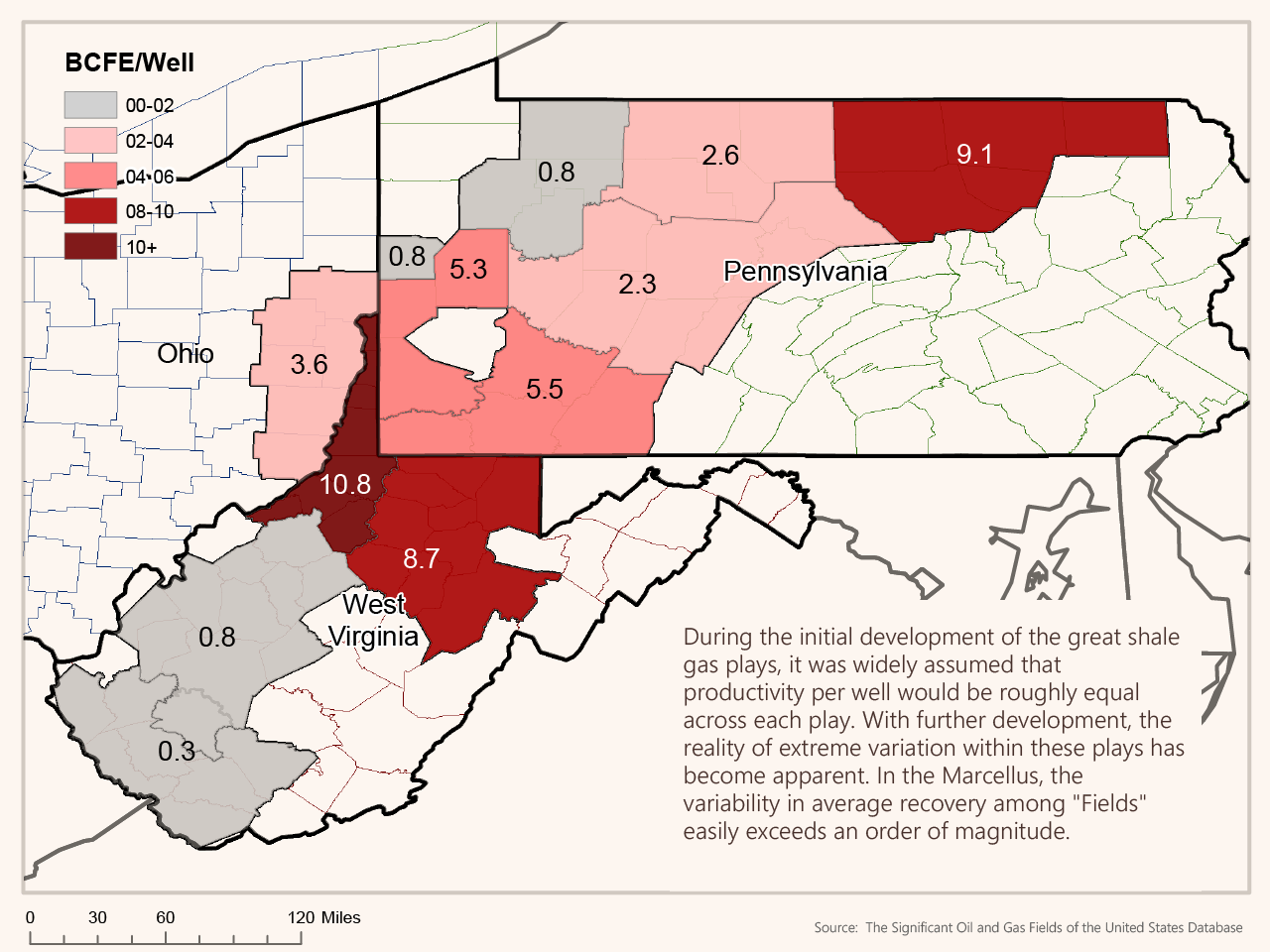Field Information
Oil and gas fields are the first of three levels of data included in the Significant Oil and Gas Fields of the United States Database.
Fields in the database are defined in a geographically and geologically consistent and coherent manner in order to facilitate relevant field comparisons and distributions.
The locations of the wells and reservoirs of each state oil and gas field have been reviewed spatially to determine whether their well assignments and their reservoir definitions are consistent and coherent, both internally and in relationship to nearby fields. Where they are not, we have created hundreds of field combinations and splits and developed data records for each of these new field definitions.
Where many wells are classified as wildcats, we have created fields from these wells wherever they form significant geographically coherent entities.
For extremely large continuous unconventional plays (e.g., the Marcellus and the Utica), we have created “fields” by combining production from contiguous counties with similar hydrocarbon compositions.
Three primary types of field information
General Information – Field identification, location, and general information
Discovery Well – Discovery Well identification and specification of who drilled it, where and when it was drilled, and the results of this drilling
Production, Size, and Wells – Histories of production and size by product and BOE, year-end well counts, and original oil-in-place.
These types of field data are combined into the Field Master Table (FMASTER), which is designed to facilitate a broad variety of field data retrievals.
primary uses of field information
- Size Distributions
- Production Histories
- Recovery Growth
- Discovery Histories
An expanded list of each of these uses is provided in Retrieval Possibilities
The KnowNow retrieval system included with the field and reservoir database provides many variations of each of these primary uses
ILLUSTRATIONS OF THE USES OF FIELD DATA
The first – an example of production histories - shows the composition of production by “field” in the Marcellus gas play from 2008-2014. The second - an example of size distributions - shows the spatial distribution in the average recovery by well by “field” in the Marcellus gas play thru 2014
Production by "Field" in the Marcellus Play, 2008-2014

Variation in Average Recovery per Well Among Marcellus "Fields" thru 2014
